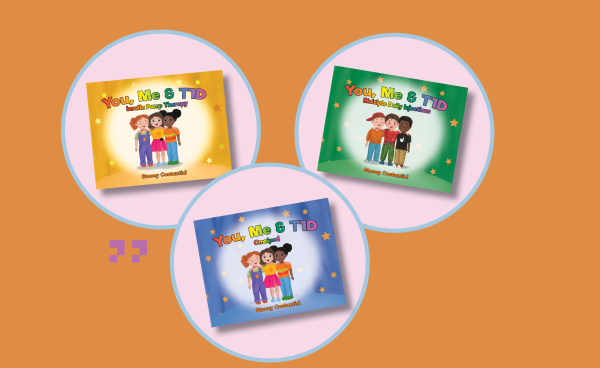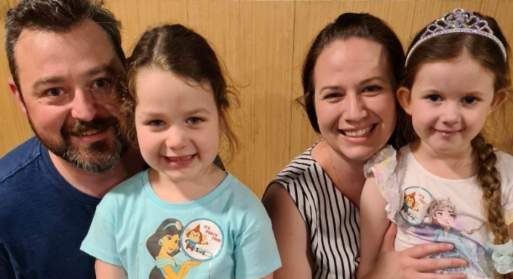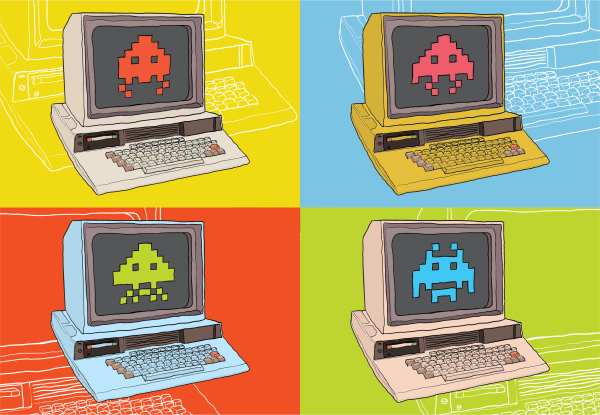Helping young children adjust to type 1 diabetes can be a challenge, but a new series of picture books are giving parents and educators some vital tools to demystify the condition, writes MYKE BARTLETT.
Author Stacey Costantini tends to look on the bright side. When her daughter Georgia was diagnosed with type 1 at 10 months old, Stacey was grateful to leave hospital armed with the latest in diabetes technology – namely a CGM and an insulin pump.
“When we talk to people, we feel like we’re new age parents, because I just can’t imagine how we would have got through those stressful times without the CGM,” Stacey says.
“I understand that some educators encourage people to learn how to manage without one, but when you’ve got very young kids who can’t talk and can’t explain how they’re feeling, I don’t know how a parent could do it without the aid of technology.”
But as Georgia grew older, that technology started to become an issue in itself. For most parents, getting young children into clothes and shoes can be challenging enough, let alone packing your kid off to day care or kindergarten with a pump and a CGM. After emerging from the early years bubble and starting to spend time with her peers, Georgia noticed that she stood out from the crowd.
“She noticed other kids didn’t have a pump or, you know, the kids would start asking her questions out of a natural curiosity about what was on her arm or ‘What’s that on your leg?’ It started to affect Georgia. You always read that with chronic health conditions come increased chances of depression and anxiety and so forth, but I don’t think I expected that to happen at such a young age. It shocked me.”
“There’s no question the technology helps her immensely to live a more free lifestyle, but it also brings a visual aspect that she’s going to be asked about throughout her life.”
Georgia’s unhappiness at being singled out for her diabetes tech reached the stage where she started refusing to wear it.
“There’s no question the technology helps her immensely to live a more free lifestyle, but it also brings a visual aspect that she’s going to be asked about throughout her life. We didn’t want her to get into a negative mindset where she didn’t want to use it, because that would just make everything a bit more complicated. We wanted to help her feel less self- conscious and that’s where the idea for the book came from.”

Part of the problem, Stacey realised, was that Georgia simply didn’t see herself reflected in the world around her – not in her classroom, not in the films she watched or the books she read.
“There are some fantastic books, but they didn’t reflect modern times, when most children with type 1 will have some form of technology. That visual aspect was really important to show, because it’s important for these devices to be a bit more widely known about, in the same way that other people have asthma puffers or so forth.”
“I get messages from parents saying their kids love seeing a character who has an insulin pump.”
Stacey was also keen that the book was “bubbly and colourful” to be accessible – and not overwhelming – for younger kids. A lot of the existing books were aimed more at adolescents than pre-primary. The first book, You, Me and T1D, focused on helping young kids understand life with an Omnipod but, after feedback from other parents, Stacey released two further volumes looking at other management styles.
“I get messages from parents saying their kids love seeing a character who has an insulin pump or is carrying a phone – which is another really important bit of equipment that our kids have to carry around and explain to people.”
The positive impact on Georgia has been wonderful to see, Stacey says.
“She loved seeing a character that had her devices. She loves pointing out that we can see the CGM on that arm or the pods on that one. And funnily enough, when we initially put her on the Omnipod, she only wanted it on her leg. In the book, with the character I’ve put it on different spots and that’s given her a little bit of confidence to try something new.”
“Prior to the book, we’d be on playgrounds and kids would stop in their tracks what they noticed her pump.”
What might have made the biggest difference, however, is the effect
reading the book has had on her peers, many of whom were previously wary of the devices.
“I was there when the teacher read the book and, at the end, Georgia got up in front of the class, and said, ‘So, if you have diabetes, or you don’t have diabetes, we can still be friends.’ I was so proud, but it was heartbreaking. Because, of course, at that age, that’s the main thing that’s on your mind. As parents we try and help as much as we can, but kids with type 1 have got to take on these responsibilities, so young, in trying to explain themselves or have other kids understand their situation.”
A little education goes a long way.
“Her class has been amazing. I think kids are quite simple in terms of, if you give them an explanation, they normally just go ‘no worries’ and get on with their day. Prior to the book, we’d be on playgrounds and kids would stop in their tracks what they noticed her pump. Now those kids don’t even look twice.”
Stacey’s books can be ordered from www.youmet1d.com




